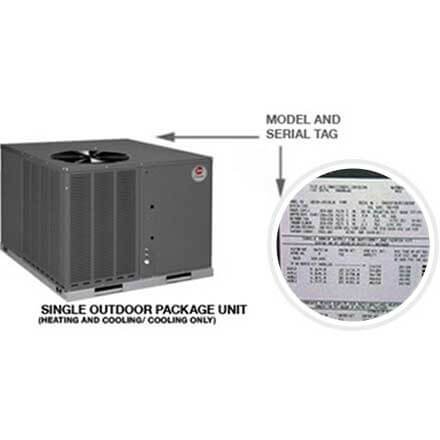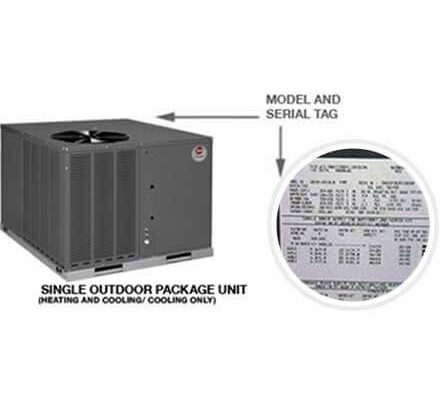
If you’re new to home appliances, the word “warranty” can sound technical. But really, it’s just Rheem’s way of promising, “We’ll fix it or replace it if something (that’s not your fault) goes wrong.” Understanding how to claim a warranty for your Rheem water heater is a lot like having a safety net—one that’s surprisingly easy to use when you know the steps. Let’s break it down together, one practical step at a time.
What Does A Rheem Water Heater Warranty Cover?
Before you jump into the warranty claim process, it helps to really get what’s covered—and what’s not. It’s like reading the rules before playing a board game. Most Rheem water heaters come with a standard limited warranty. That usually means the main parts—like the tank on a storage heater, or the heat exchanger in a tankless model—are protected against defects for a set number of years.
Here’s the catch: warranties don’t usually cover damage from things like poor installation, lack of maintenance, or accidents. Think of it as insurance for manufacturer slip-ups, not for user error or Mother Nature’s wild side. And certain components, like batteries in electronic remotes or regular wear-and-tear parts, might have shorter terms or not be covered at all.
You might be wondering, “How long does my Rheem warranty last?” Good question. It depends on your model and whether you’ve registered your product. For example, registering online after purchase can sometimes extend your coverage. It’s a small effort upfront with a big payoff if things ever go sideways.
Finding Out If Your Water Heater Is Still Under Warranty
So, you’ve got a problem with your Rheem water heater, and now you’re asking: Is this thing even still under warranty? Honestly, this step is easier than you might think.
Start by hunting down the serial number and model code, which are usually printed on a label stuck to the side of your heater. If you’re lucky, you’ll find it right near the bottom or behind a maintenance access panel. Don’t worry if you have to crouch or get a flashlight—it’s worth it.
Once you’ve got those numbers, head to Rheem’s official warranty check website. Enter your details, and it’ll spell out your warranty status in plain language. If you can’t find your paperwork, don’t panic! The serial number is your golden ticket—no proof of purchase needed in most cases. But if you do still have the purchase receipt, keep it handy. It can make things go even smoother when you talk to support.
How To Start The Rheem Warranty Claim Process
Ready to get the ball rolling? Good news—the actual warranty claim process for a Rheem water heater is pretty straightforward, even if you’re not a seasoned DIY-er.
- Step 1: Gather Your Info. This means your water heater’s serial number, model number, and (if possible) a copy of your original sales receipt.
- Step 2: Contact Rheem Support. You can call their customer support line, start a claim online, or (if you bought it through a pro installer) go through your installer or plumbing company.
- Step 3: Describe The Problem. Be ready to explain what’s happening, describe any unusual lights or codes on digital units, or send photos for clarity.
- Step 4: Follow Instructions. Rheem will usually tell you what to do next—maybe arrange a service visit, or give you an authorization code for parts replacement.
Let me explain—if your heater flashes an error code or just stops working, jot down exactly what you see, hear, or smell. The more details you provide, the faster Rheem can diagnose and process your claim without any unnecessary back-and-forth.
Troubleshooting Before Filing A Claim
Here’s a little personal advice—don’t rush to file a warranty claim until you’ve run some simple checks. Sometimes, you can fix the issue without needing Rheem’s help (and save yourself time).
- Check your power and pilot light. Electric water heaters need a functioning circuit, and gas units need a steady pilot. Try resetting the breaker or relighting the pilot if it’s out.
- Look for leaks or drips. Small leaks might be due to loose fittings, which you can tighten yourself. Larger leaks might mean a tank problem (definitely a warranty issue).
- Pay attention to error codes. Tankless Rheem models often have a digital display that shows codes if something’s wrong. Write down any codes, as these are gold for tech support.
- Test the remote (if applicable). If your unit uses a remote to adjust temperature and you suspect battery or pairing issues, try replacing the battery or resetting the sync between the remote and heater.
Honestly, even a basic reset—turning the heater off for a minute—can sometimes solve the problem. If you check these things first, you’ll either fix the issue yourself or be way more prepared when you call Rheem, which speeds along the process.
Registering Your Rheem Water Heater For Warranty
Registering your water heater with Rheem isn’t absolutely required for warranty service, but it’s a smart move. Let me paint a picture: you register once, and all your product details are in Rheem’s system. If you ever have a problem down the road, there’s no frantic search for paperwork—it’s all there already.
The registration process is as simple as visiting the Rheem website and filling out a form with your model, serial number, and installation date. You might even get an email confirmation as your digital “receipt.” In some cases, registering right after purchase can boost your coverage—extra years or upgraded service, depending on the model.
You might be tempted to skip registration, but trust me, it’s one of those little tasks that pays off big if you ever have to claim your warranty. It’s like setting up a backup before your computer crashes—future you will thank you.
What To Expect After Submitting A Warranty Claim
You’ve filed your claim—now what? Here’s how it usually goes, so you’re not left in the dark.
First, Rheem (or one of their authorized service providers) will review your claim details. If it’s a straightforward part replacement, they might send you the new part or send out a technician to code, pair, or reset the system onsite. For more complex issues—like a full tank replacement—the process could involve an onsite inspection or pickup.
Keep your phone nearby. Rheem may reach out with additional questions or troubleshooting steps. If they send a technician, you’ll usually get a window for the service visit (think cable company, but often more precise).
Try to be available and responsive after you file—the faster you reply, the quicker your water heater gets back to doing its job.
Most claims are resolved within a few days to a couple of weeks, depending on part availability and your location. If you’ve registered and provided all the info upfront, it’ll move even faster.
Common Reasons Warranty Claims Get Denied
Not every claim sails through. Here’s where people sometimes hit snags.
- Improper installation: If the heater wasn’t installed by a licensed professional (for models that require it), Rheem can deny your claim.
- Lack of regular maintenance: Ignoring basic upkeep—like flushing the tank or cleaning filters—can void part of your warranty. Rheem expects you to follow their recommended schedule.
- Out-of-warranty period: If the warranty timeline (say, 6 years or 12 years) has passed, you’re no longer covered, no matter the defect.
- Physical or accidental damage: Dings, dents, or water damage from external causes aren’t covered, just like your phone’s warranty doesn’t cover a toilet drop.
- Modifications or non-approved repairs: If you’ve done your own “creative” fixes, or installed non-Rheem parts, expect a denial.
Basically, stick with the book: keep your unit maintained, use qualified installers, and don’t try to hack the system. If you’re unsure whether something’s covered, snap a few photos and ask Rheem before starting a claim. They’re usually upfront about what’s possible.
Comparing Rheem Warranty Claims To Other Brands
You might be curious—how does Rheem stack up against other water heater brands when it comes to warranty service? Here’s what I’ve noticed in the real world.
Rheem typically offers competitive coverage, with many models featuring 6, 9, or even 12-year warranties on major components. Some brands offer longer terms for high-end models, but Rheem’s process is known for being pretty smooth. Their online support, user resources, and service network are solid—less bureaucracy, more action.
If you’re facing a reset code or troubleshooting a remote issue, Rheem’s digital tools and helpful explanations often beat the “call and wait” approach from smaller brands. And when it comes to universal versus brand-name parts, using genuine Rheem components is usually a must for keeping your warranty valid.
In short, claiming a warranty with Rheem is generally less stressful if you keep your records organized and stick to their guidelines. Other brands may require more paperwork or have stricter conditions, especially for online purchases or self-installs.
Bringing It All Together: Making Your Warranty Work For You
Claiming a warranty for your Rheem water heater isn’t rocket science, but it’s definitely one of those tasks that rewards a slow, detail-focused approach. Whether you’re dealing with a stubborn reset code, a broken remote, or a leaky tank, knowing your model, understanding your coverage, and staying organized will make the process smooth—maybe even a little satisfying.
If you’re ever not sure what’s next, don’t hesitate to reach out to Rheem’s support team. They deal with this every day and can guide you with clear steps. And remember: keeping up with regular maintenance, using genuine Rheem parts, and saving your paperwork (or registering right away) are the keys to making your warranty actually useful, not just a forgotten promise buried in a drawer.
So the next time your hot water splutters, you’ll know exactly what to do—and maybe even help a friend do the same.
